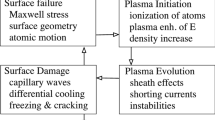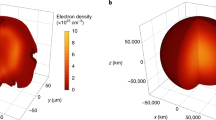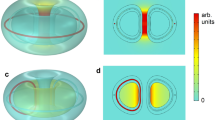Abstract
A SHORT time ago we published (Proc. Roy. Soc., A, 109, 186, 1925) an account of some attempts to confirm the observations by Collie, Patterson, and Masson (ibid. 91, 30, 1915) of the occurrence of helium and neon in vacuum tubes. In view of the fact that we were able to obtain small quantities of these rare gases by passing the discharge through oxygen at low pressures when a magnesium or aluminium anticathode coated with nitride was used, no trace being found in the absence of the nitride, we attributed their formation to the disintegration of the nitrogen atom. Success depended on the use of an induction coil provided with a hammer break rather than a mercury break, an observation which agrees with those made by the previous authors.
This is a preview of subscription content, access via your institution
Access options
Subscribe to this journal
Receive 51 print issues and online access
$199.00 per year
only $3.90 per issue
Buy this article
- Purchase on Springer Link
- Instant access to full article PDF
Prices may be subject to local taxes which are calculated during checkout
Similar content being viewed by others
Author information
Authors and Affiliations
Rights and permissions
About this article
Cite this article
BALY, E., RIDING, R. The Occurrence of Helium and Neon in Vacuum Tubes. Nature 118, 625–626 (1926). https://doi.org/10.1038/118625a0
Issue Date:
DOI: https://doi.org/10.1038/118625a0
Comments
By submitting a comment you agree to abide by our Terms and Community Guidelines. If you find something abusive or that does not comply with our terms or guidelines please flag it as inappropriate.



